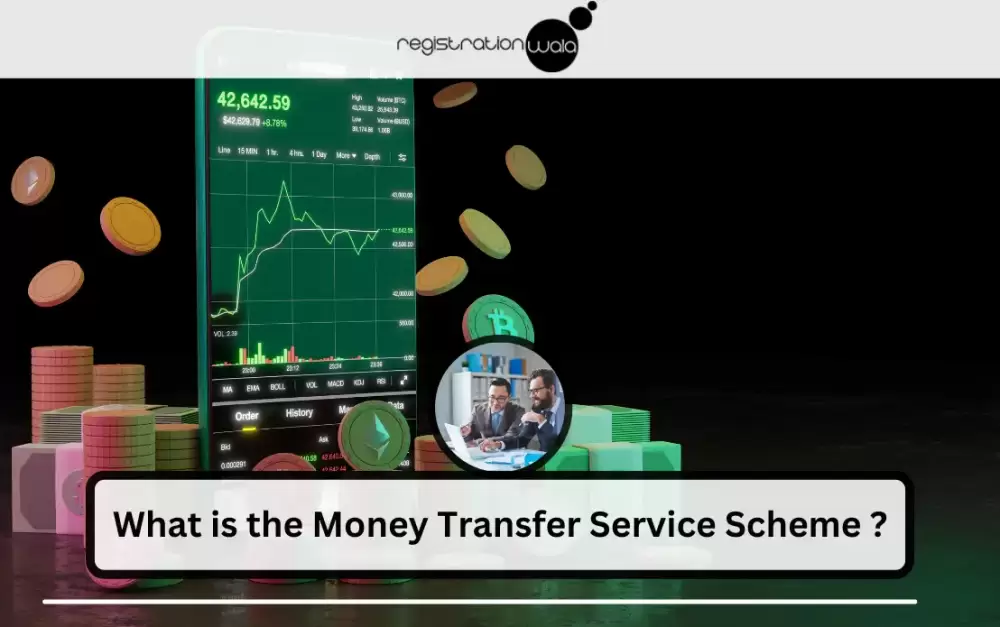What is the Money Transfer Service Scheme (MTSS)?
- August 24, 2023
- Registrationwala

- Home
- /
- Knowledge Base
- /
- Regulatory License
- /
- FEMA Consultants
- /
- What is the Money Transfer Service Scheme (MTSS)?
What is the Money Transfer Service Scheme (MTSS)?
For families, remittance is an important source of income and also good for national income. It is one of the largest sources of external financing. In India, there are two channels to receive remittances, first, the Rupee Drawing Arrangement (RDA) and second is Money Transfer Service Scheme (MTSS).
In these options, the beneficiaries can receive inward remittances through postal and banking channels. The banks have permission to become a partner with other banks for conducting remittance business.
The International Financial System (IFS) is a platform of Universal Post Union (UPU) which is generally used for post channels. So, the Money Transfer Service Scheme is the most used channel in the country to receive inward remittances. Below in the article, the features, processes of MTSS and differences between RDA and MTSS shared. Check the article to know complete information about the Money Transfer Service Scheme.
Difference Between RDA and MTSS
Through the Rupee Drawing System, only small amounts of money can transfer for personal use. This will not be suitable for large amounts used for trading, as there is a limit on the amount that can transfer.
Only banks in the Authorized Dealer-I (AD-I) category are allowed to conduct transactions through RDA, and these banks are approved by the RBI. Under the scheme, no limit is set for transactions to an individual but there is a limit of Rs. 5 lakhs for transactions of trade purposes. In the RDA scheme, there is no provision for submitting remittances in cash in the RDA scheme.
The Government of India brought the Foreign Exchange Management Act (FEMA), 1999 to regulate foreign exchange in India. Under the FEMA act, some agents provide inward money transfer services.
In the MTSS scheme, the transfer of funds is done between foreign countries and India. Using MTSS for donation or charity is not permitted. So, the transfer limit for MTSS is USD 2500 per transaction, and a single recipient can receive a maximum of 30 transfers within a calendar year.
Cash remittance is set in the MTSS scheme but it is set at Rs. 50000. If the remitted amount exceeds this limit, it must be submitted through a Demand Draft, cheque, or other means. For foreign tourists visiting India, the allowed cash remittance transfer limit is higher than Rs. 50000.
Norms to Follow for Money Transfer
For transferring money to India follow these norms:
- To transfer the money, the overseas principal or any other registered entity must get permission from the RBI.
- No person can act as an Indian Agent without the permission of the Reserve Bank of India (RBI). In Section 10(1) of the FEMA Act, 1999 the permission grant to be an India agent.
- Applicant must have net owned funds of Rs. 50 lakhs.
- To become an Indian Agent, an entity must be a designated Authorized Dealer Category-I bank, Authorized Dealer Category-II, Full Fledged Money Changer, Department of Posts, or a Scheduled Bank.
Features of Money Transfer Service Scheme
The following are the features of the money transfer service scheme:
Remittances Allowed: MTSS can only use for personal transactions, such as supporting family members or assisting foreign visitors. So, the MTSS should not use for commercial purposes, charitable contributions, or transferring funds to NRE or NRO accounts.
Limit on transactions: In a year, you can only transfer 30 times with a limit of USD 2500 per transaction.
Cash Disbursal: An amount up to Rs. 50,000 can paid in cash and anything beyond this amount can paid in cheques or demand drafts.
Payment Currency: Only pays in Indian Currency and not in foreign currency.
Conveniences: The process of transferring money through MTSS is easy, hassle-free and a swift method of sending payment to a beneficiary.
No Outward Remittances: MTSS prohibits the transfer of funds outside the country or the repatriation of funds. This means that the individual who sends money from another country cannot send it back to their country of residence using MTSS.
Procedure of Transfering Money in MTSS
To send money through MTSS you have to follow the following steps:
Step 1 : The remitter first visits an overseas principal fills out the form and submits the required fees. So, the overseas principal must be a registered entity and have a license to carry the MTSS services from the Central Bank/ Government of the financial regulatory authority of the country.
Step 2 : After paying fees, the overseas principal will create a Unique Transfer Control Number (MTCN). This number works as a reference number for the transaction.
Step 3 : After getting the reference number, share this with the beneficiary. Now the beneficiary will go to an authorised agent or bank.
Step 4 : The beneficiary will fill out the application, and attach the necessary identification documents and the MTCN number.
Step 5 : After the verification, the beneficiary will get the money in Indian currency.
Conclusion
To conclude, the MTSS is an easy and faster way to transfer money to India from any country in the world. This scheme is a part of the FEMA Act and the Indian agent needs permission of RBI to transfer money. So, the remitter must go to the registered agents only, to transfer the money. Also, ensure that the MTCN number is correctly passed to the beneficiary so that the beneficiary will get money without any issues.
- 3251 views
